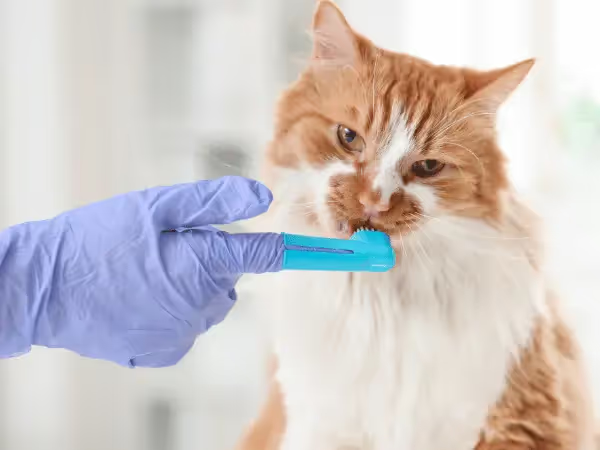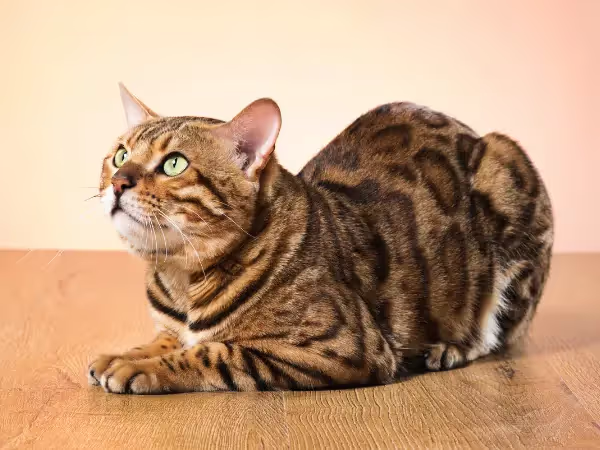Keeping your cat’s teeth clean is an important part of every cat care routine. Feline dental care plays a major role in preventing pain, infections, and other serious health problems in cats.
Many pet parents have questions about how to brush a cat’s teeth or how to clean a cat’s teeth without brushing. The good news is that there are two options for cleaning a cat’s teeth at home. This Sploot Vets guide outlines the steps for both methods and explains when to visit the vet for professional teeth cleaning.
Overview of How to Clean a Cat’s Teeth:
- There are two main ways to clean a cat’s teeth at home: using a cat toothbrush or using a gauze pad.
- Most (but not all) cats can be trained to accept toothbrushing, especially if started at an early age. In any case, the key to successful training is positive reinforcement.
- At-home dental care is essential, but it does NOT replace yearly veterinary dental care and teeth cleaning.
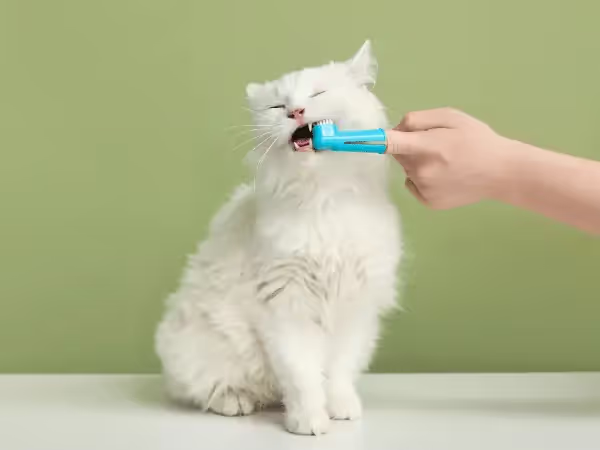
Is it Necessary to Clean a Cat’s Teeth?
Yes, cleaning your cat’s teeth is necessary. Ideally, brushing or cleaning a cat’s teeth should be done daily. If that isn’t possible, aim for at least three times per week.
Regular at-home teeth cleaning or brushing helps prevent dental issues in cats, such as periodontal disease and tooth decay.
What Do Vets Recommend to Clean a Cat’s Teeth
Veterinarians recommend toothbrushing with an enzymatic cat toothpaste as the best way to clean a cat’s teeth at home. A cat-specific toothbrush or finger brush is the best tool to use. However, for cats resistant to toothbrushes, using a gauze is a good alternative.
Other supplementary ways to clean a cat’s teeth include:
- Dental chews for cats – these are treats that help reduce plaque buildup as cats chew on the treat
- Dental water additives for cats – these solutions support fresher breath and oral health for cats as they drink water
Note: When choosing dental treats and water additives for cats, refer to the Veterinary Oral Health Council’s list to choose products that are effective against plaque and/or tartar.
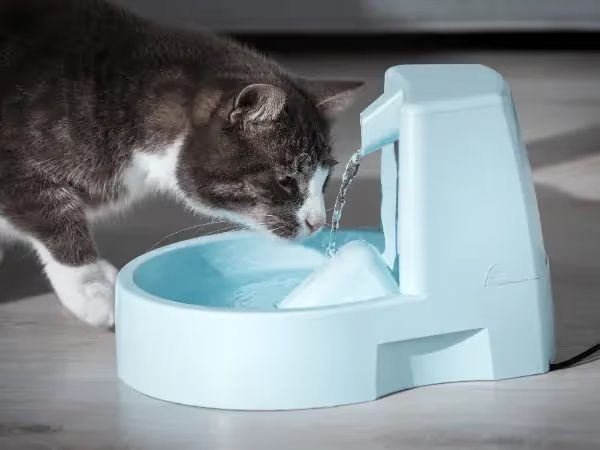
A. How to Brush a Cat’s Teeth
Getting a Cat-Friendly Toothbrush
Typically, toothbrushes for cats are small enough to fit a cat’s mouth and have soft bristles for a gentle clean. These can be either a handheld toothbrush with a small, angled head or a finger brush that fits over the finger for more comfortable use. (Finger brushes are typically easier to use for beginners.)
Note: In instances where cat-friendly toothbrushes are difficult to find, Sploot veterinarian Dr. Sylvia Berns offers this tip: “If a pet parent opts for a human toothbrush, which can sometimes be easier to find, we recommend choosing a toothbrush for babies, as these are the smallest. Some toothbrushes for babies even slip onto the fingers. In any case, choose the one with the smallest head and the shortest and softest bristles.”
Choosing a Cat-Friendly Toothpaste
Cat-friendly toothpastes are especially formulated for cats; they exclude unsafe ingredients for cats that can be found in some human toothpastes (e.g., xylitol).
Some toothpastes for cats are enzymatic, meaning they contain enzymes that break down plaque and fight bacteria; these are typically recommended by vets for a deeper clean.
Many options are also flavored to taste like chicken or fish, to make brushing pleasant for cats.
Steps on How to Brush a Cat’s Teeth
Training your cat to have their teeth brushed can be done at any point. However, the earlier you do this process, the better. If you have a kitten, it is best to include toothbrush training in their kitten socialization process.
Here are the steps on how to brush a cat’s teeth at home:
Note: This is a gradual process for cats; each step can take several days to complete. Only move on to the next step when the cat is fully comfortable:
- Get your cat accustomed to being gently touched around the mouth. Reward calm behavior. Once your cat is comfortable, move on to the next step.
- Next, let your cat taste the toothpaste. Many cat toothpastes come in delicious flavors, serving as a toothpaste and a treat in one. Reward calm or positive behavior with plenty of praise.
- Practice holding your cat comfortably for toothbrushing. Holding them gently from behind is often less threatening and discourages them from scooting back from the toothbrush. Hold your cat while also gently touching near their mouth. Reward calm behavior.
- Once your cat is comfortable with being held and having their mouth touched, introduce the toothbrush to them. Allow your cat to lick flavored cat-friendly toothpaste or churu from the toothbrush to help create a positive association.
- Next, begin toothbrushing. Focus on the canine teeth first (the long, sharp front teeth). This gets your cat accustomed to the sensation of having their teeth brushed. These teeth are easily accessible, making them an ideal starting point.
- After several days of brushing just the canines, take the next step: hold your cat (as instructed in step 3) and lift their lip to give the molars a quick brush as well. Try to brush the molars on both sides for just a few seconds.
- Gradually increase your cat’s toothbrushing time. Slowly build up to 30 seconds per side..Reward calm behavior with plenty of praise and/or some dental treats for cats.
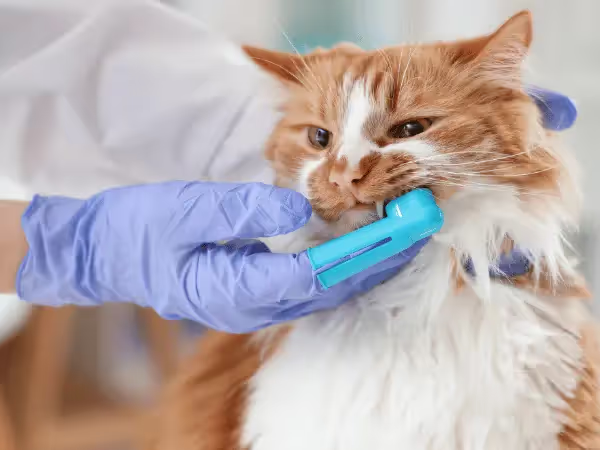
B. How to Clean a Cat’s Teeth Without Brushing [Using Gauze]
Some cats are resistant to toothbrushing, especially older or senior cats that have not been trained for it as kittens. For these cats, pet parents can consider using an alternative method for at-home teeth cleaning, using a piece of gauze.
Here are the steps on how to clean a cat’s teeth with a gauze:
Note: Some of these steps overlap with the steps for brushing a cat's teeth. Similarly, the following is also a gradual process, with each step possibly taking several days. Only proceed to the next step when the cat is fully comfortable with the current step.
- Get your cat used to being touched around the mouth. Reward calm behavior. Once your cat is comfortable with this step, proceed to the next.
- Practice holding your cat comfortably for at-home teeth cleaning. Holding them from behind is often less threatening and discourages them from scooting away. Hold your cat while also touching gently near their mouth. Reward calm behavior.
- Once your cat is comfortable with being held and having their mouth touched, the next step is to try using the gauze to clean their teeth. Get a clean, non-woven 3x3 gauze and wrap it around your index finger.
- Hold your cat (as in step 2), and rub their canines (the long, sharp front teeth) with the gauze. These teeth are easily accessible, which makes them the best starting point. Observe your cat’s reaction and reward calm behavior with dental treats and/or praise.
- After several days of cleaning your cat’s canine teeth with gauze, take the next step: lift their lip and give the molars a quick wipe as well. Try to wipe the molars on both sides of your cat’s mouth. Reward your cat with treats and praise.
- As your cat gets comfortable with getting their teeth cleaned with gauze, aim to do 4-5 swipes on both sides of their mouth.
Note: Once your cat is accustomed to steps 1 to 6, you can try adding some enzymatic cat toothpaste to the gauze for a more thorough clean.
Additional Note: Some cats that become accustomed to teeth cleaning with gauze can also be trained to be comfortable with toothbrushing later on. If you’re considering this transition, opting for a finger brush would make the process more seamless, as it offers a more similar experience.
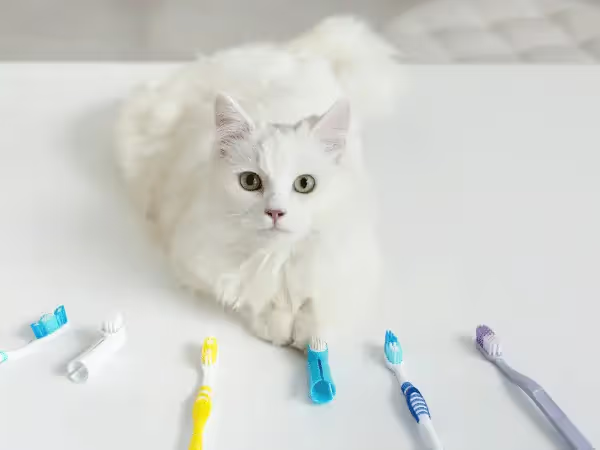
How to Know if a Cat Needs Dental Cleaning By a Vet
Even with at-home dental care, professional veterinary dental cleanings for cats are often needed.
Veterinary dental cleaning for cats involves anesthesia to allow a thorough cleaning, scaling, and examination. This veterinary service helps detect dental issues in cats early and prevent serious dental complications.
It is generally recommended to have veterinary teeth cleaning for cats once or twice a year.
Final Thoughts on How to Clean or Brush a Cat’s Teeth
This wraps up our guide on how to brush a cat’s teeth and how to clean a cat’s teeth with gauze. At-home cat dental care for cats (whether brushing or using gauze) is essential for maintaining your cat’s oral health.
However, it should be paired with routine veterinary dental exams and professional teeth cleanings for cats, as recommended by your vet. Together, these steps keep your cat’s teeth and gums healthy for years to come.
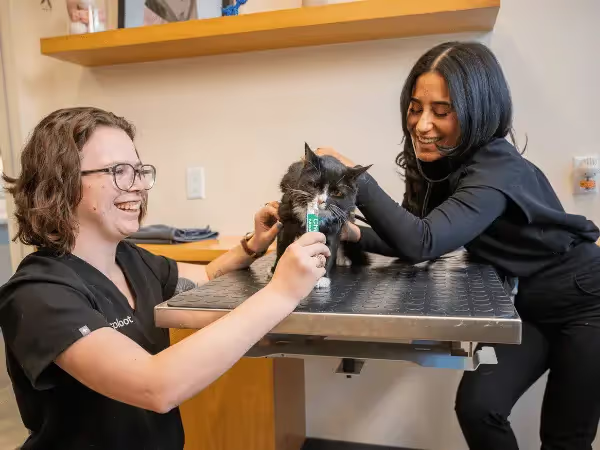
Sploot Vets: Your All-in-One Cat Vet, Including Dental Care
Sploot Vets offers comprehensive cat dental care alongside preventive, urgent, and emergency veterinary services. Along with top-tier, comprehensive care, our team provides a Fear Free veterinary experience, helping kittens, adult cats, senior cats, and even anxious cats feel at ease.
With clinics in Chicago, Denver, and Colorado Springs, we’re open 365 days a year with extended hours to ensure your pet always has access to the care they need.
Easily book your appointment online or through the Sploot Vets pet care app.


